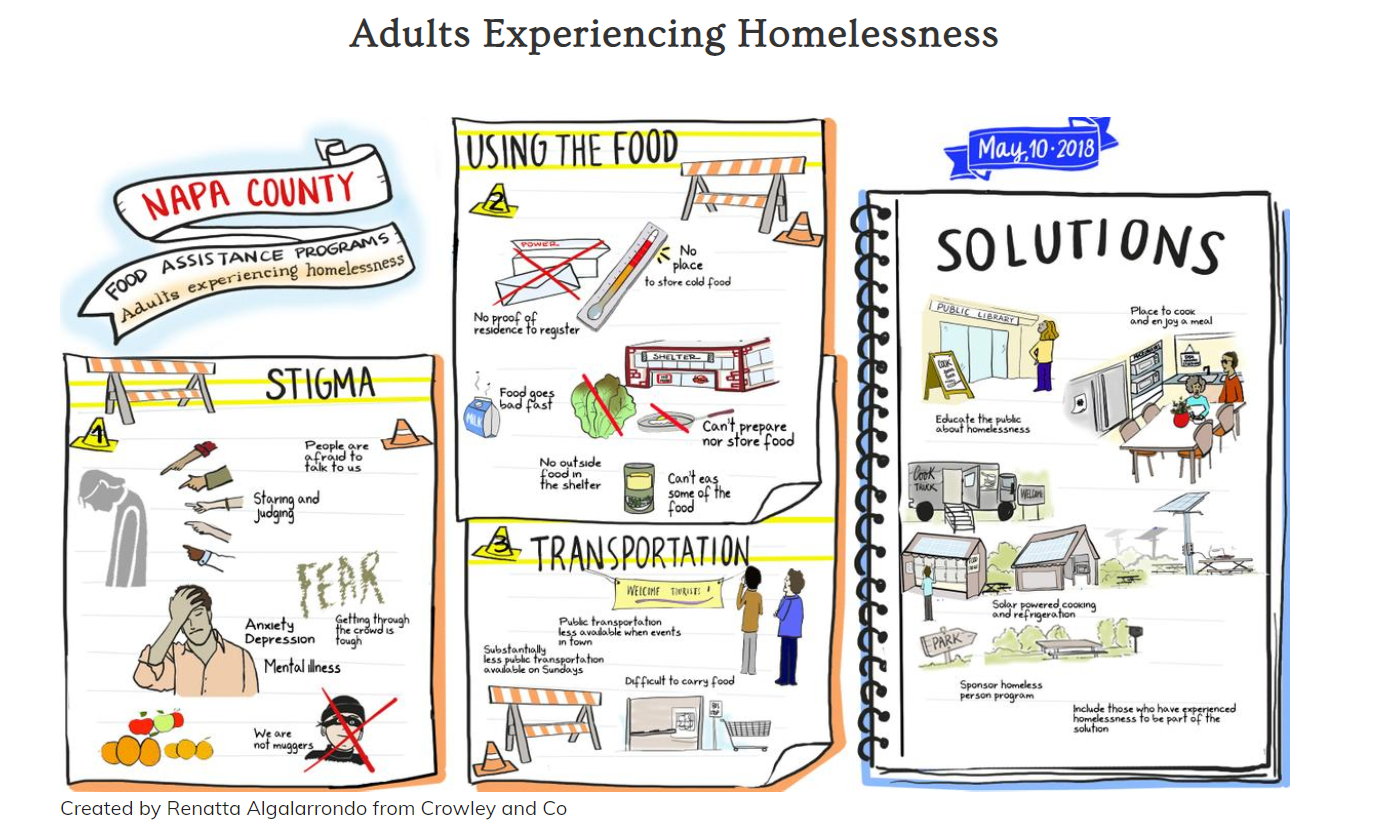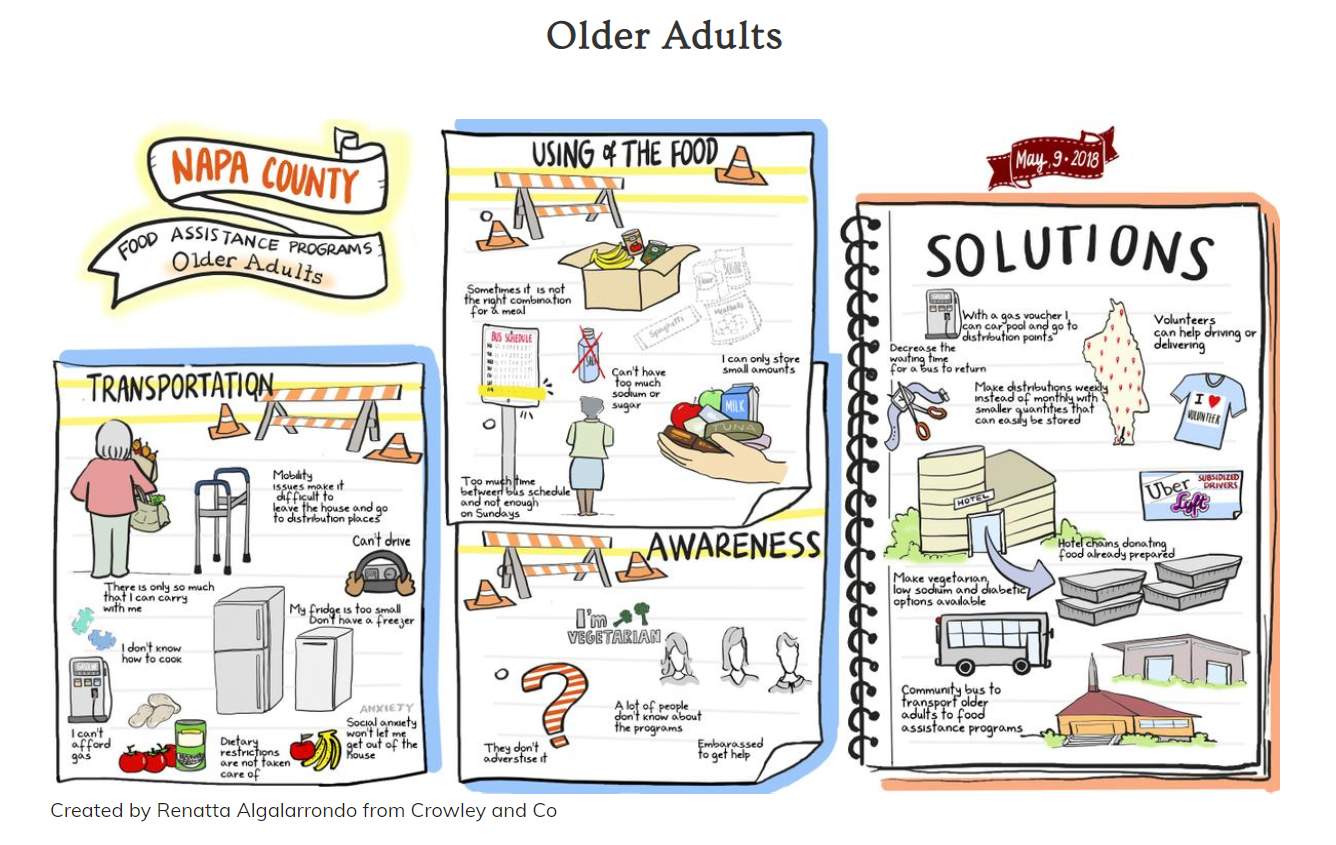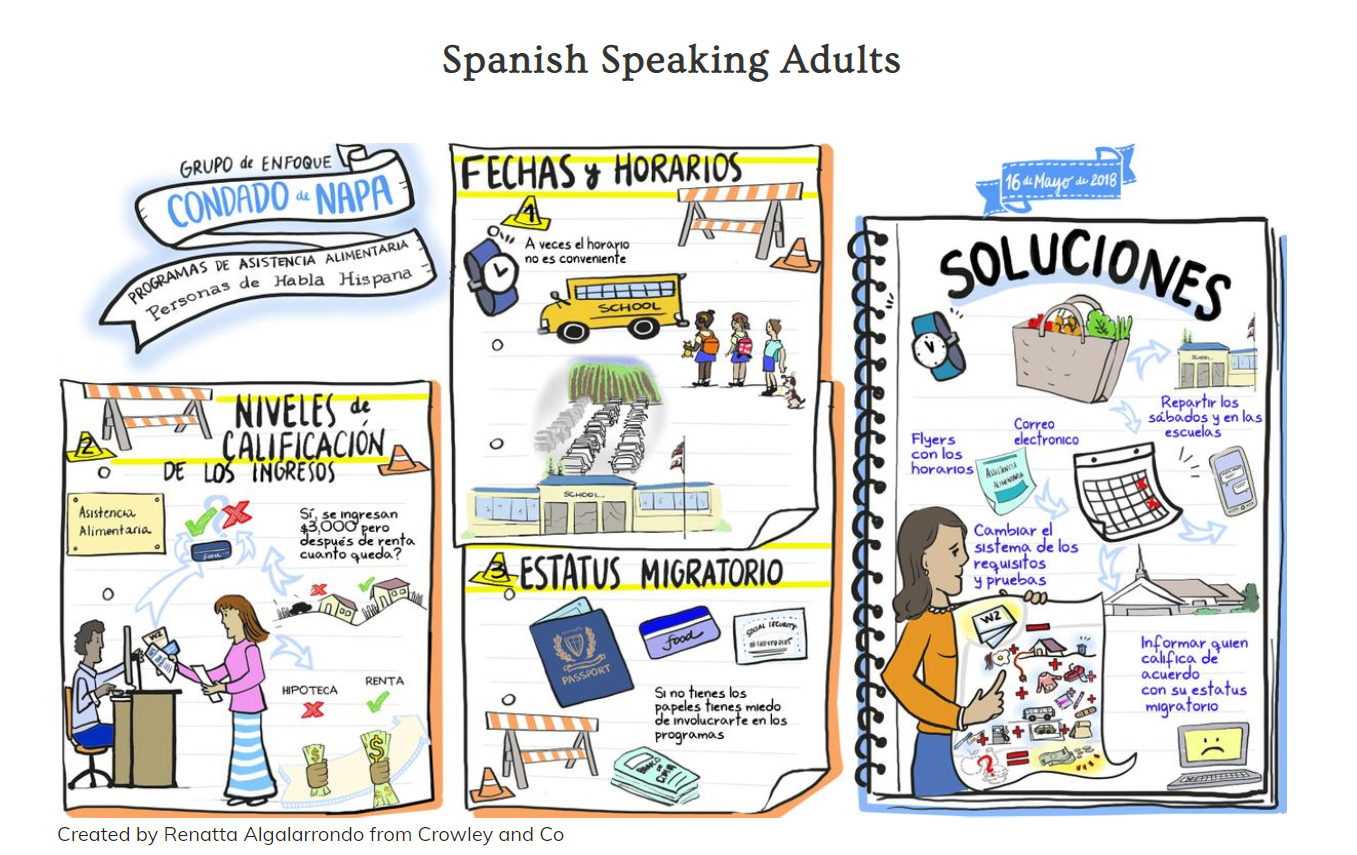Finding Barriers and Solutions to Combating Food Insecurity in Napa County
Highlights

PHI's Survey Research Group led the Napa County Emergency Food System Study—designing instruments, overseeing survey data collection, conducting focus groups, analyzing data, preparing a comprehensive report and building an interactive dashboard.
11K+ Napa county residents living below the poverty level
351 surveys collected from users & non-users of the emergency food provision system in Napa County
-
Focus Areas
Healthy Communities -
Issues
Nutrition & Food Security -
Expertise
Research – Survey
In 2018, PHI’s Survey Research Group (SRG) launched a study to explore what prevents low-income, food insecure individuals from accessing emergency food services in Napa County. This work was conducted on behalf of the Napa County Health and Human Services Agency and in partnership with PHI’s Population Health Innovation Lab.
This study utilized human-centered design and user-centered research approaches to identify barriers to using the emergency food provision system and other food assistance programs. SRG held convenings with stakeholders, community members, and decision-makers to participate in the planning and design of the study, and to provide important context about the emergency food system in Napa County. Insights from these conversations guided SRG in identifying research questions and priority populations—including older adults, families with youth, residents of low-income neighborhoods, Latino/Undocumented/Monolingual low-wage workforce, and adults experiencing homelessness. SRG also worked with community partners and programs to collect surveys in English and Spanish from 351 users and eligible non-users of the emergency food provision system.
Survey respondents shared that they appreciated the quality of food and the provision of healthy food and fresh fruits and vegetables from food assistance programs they attend. Lack of awareness about the programs, not qualifying (or the perception of not qualifying) to participate, not being able to attend at the time or day the program is offered, having difficulty getting to the program, and not feeling comfortable attending the program were the top barriers to accessing food assistance programs identified in survey responses.
SRG also led focus group discussions in English and Spanish with three of the priority populations: low income older adults, adults experiencing homelessness, and Spanish speaking low income adults.
Focus Group Key Findings: Barriers to Accessing Food Assistance
SRG’s findings provided critical insights to the Napa County Health Department, with the ultimate goal of helping people access emergency food services to improve food security across the county.
In addition to a formal report, Survey Research Group created a LiveStories site to share the findings, along with other important indicators related to food security, food access, and related health and socioeconomic factors.
See the site to explore the study findings.
Work With Us
You change the world. We do the rest. Explore fiscal sponsorship at PHI.
Support Us
Together, we can accelerate our response to public health’s most critical issues.
Find Employment
Begin your career at the Public Health Institute.



